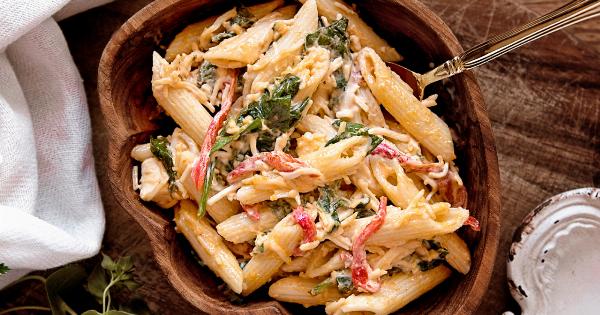Convenient kids’ meals have become a staple in many households, providing busy parents with an easy solution for feeding their little ones. These meals are marketed as quick, nutritious options that cater to children’s tastes.
However, beneath the appealing packaging and promises of healthiness, there are hidden dangers lurking that can negatively impact children’s well-being. In this article, we will explore some of these hidden dangers and shed light on the importance of making informed choices when it comes to feeding our children.
The Deceptive Marketing Tactics
One of the primary concerns with convenient kids’ meals lies in the deceptive marketing tactics employed by some companies.
Advertisements often focus on colorful characters, toys, and games included with the meal, diverting attention away from the actual nutritional content. Children are enticed by these tactics and may develop a preference for unhealthy meals that prioritize entertainment over their health.
Excessive Sodium and Sugar Content
Many convenient kids’ meals contain alarmingly high levels of sodium and sugar.
Excessive sodium intake can lead to serious health conditions such as high blood pressure, while a diet high in sugar has been linked to obesity, diabetes, and dental problems. By consuming these high levels of sodium and sugar at a young age, children may develop a taste for unhealthy foods, setting the stage for future health issues.
Poor Nutritional Quality
While some convenient kids’ meals claim to be nutritious, a closer look at the ingredients reveals a different story. Processed meats, artificial additives, and trans fats are often used to enhance flavor and prolong shelf life.
These ingredients offer little to no nutritional value and can have detrimental effects on children’s health when consumed regularly. Instead of providing the necessary vitamins and minerals, these meals contribute to empty calorie intake.
Limited Fruit and Vegetable Options
Convenient kids’ meals often lack an adequate variety of fruits and vegetables, further limiting children’s exposure to essential nutrients. Instead, they are filled with starchy sides like fries or mashed potatoes.
The absence of fresh and colorful produce deprives children of vitamins, minerals, and dietary fiber necessary for their growth and development.
Portion Sizes and Overeating
The portion sizes of convenient kids’ meals are often larger than what is appropriate for their age groups. This can lead to overeating and poor eating habits, as children are incentivized to finish their entire meal.
Over time, these habits can lead to weight gain and an increased risk of obesity, as children learn to ignore their natural hunger cues and rely on external cues to determine when they are full.
Allergen Awareness
Another concern when it comes to convenient kids’ meals is the lack of allergen awareness. Many meals contain common allergens such as nuts, soy, wheat, or dairy, which can pose a significant risk to children with allergies or intolerances.
While some manufacturers provide allergen labels, there is still a risk of cross-contamination, making it vital for parents to carefully read labels to ensure the safety of their child.
Environmental Impact
The convenience of kids’ meals often comes at a price for the environment. The individual packaging, plastic toys, and excessive waste generated by these meals contribute to landfill pollution and harm our planet.
Teaching our children the importance of sustainability and reducing waste is crucial for the future of our environment.
The Importance of Mindful Eating Habits
It is essential for parents to be aware of the hidden dangers in convenient kids’ meals and make informed choices when it comes to their children’s nutrition.
By prioritizing mindful eating habits, we can promote long-term health and instill a foundation of healthy eating from an early age. Here are some tips for making healthier choices:.
1. Read Labels Carefully
Take the time to read the nutritional labels on kids’ meals. Look for meals with lower sodium and sugar content and avoid those with artificial additives or trans fats. Choose meals with recognizable, whole food ingredients.
2. Opt for Homemade Alternatives
Consider preparing homemade meals for your children whenever possible. This way, you have full control over the ingredients and can ensure a balanced and nutritious meal. It may require more effort, but it is worth it for their health and well-being.
3. Encourage Variety
Expose your children to a wide range of fruits, vegetables, and whole foods. Encourage them to try new flavors and textures, providing a diverse and nutrient-rich diet.
This also helps broaden their food preferences and reduces the likelihood of them becoming picky eaters.
4. Portion Control
Be mindful of portion sizes and offer appropriate servings for your child’s age. Avoid the temptation to overfeed or encourage finishing the entire meal if they are no longer hungry.
Teach them to listen to their bodies and eat until they are satisfied, rather than until their plate is empty.
5. Educate Kids About Nutrition
Empower your children with knowledge about nutrition and teach them about the benefits of eating a balanced diet. Involve them in meal planning and preparation, making it a fun and educational experience.
6. Support Local Farms and Markets
Consider supporting local farmers and markets, where you can find fresh and organic produce. By choosing locally sourced ingredients, you are not only supporting the local economy but also ensuring a higher quality of food for your children.
Conclusion
While convenient kids’ meals may offer a quick solution for busy parents, it is crucial to be aware of the hidden dangers they pose.
The deceptive marketing, excessive sodium and sugar content, poor nutritional quality, limited fruit and vegetable options, portion sizes, allergen risks, and environmental impact are all factors to consider when making choices for our children. By promoting mindful eating habits and making informed choices, we can safeguard their health, foster positive relationships with food, and contribute to a sustainable future.





























